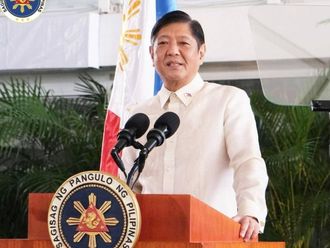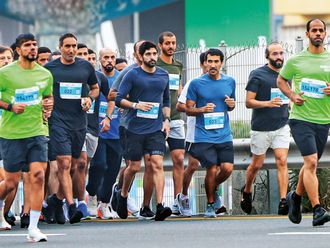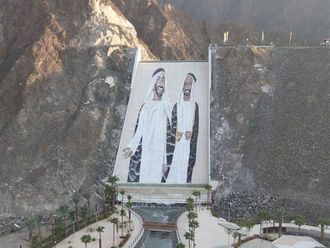President Gloria Arroyo called for unity and support for the ongoing U.S.-Philippine war games in central and southern Philippines as she led rites in which 80 World War II veterans re-enacted the horrifying 1941 Death March in central Luzon.
The historical event underlined the suffering of the Filipino soldiers when the Japanese Imperial Army invaded Corregidor off Manila Bay and the fall of Bataan in central Luzon 61 years ago.
"It (the event) comes at a time when we are in the midst of the Philippine-U.S. balikatan (shoulder to shoulder), a joint military exercise," said Arroyo. "The Day of Valour is our way of paying homage to the countless Filipino war dead as well as the (World War II) veterans who are still with us."
Arroyo said the ongoing Philippine-U.S. wargames are "an essential step in mutually strengthening their respective military capabilities to respond to the global threat of terrorism."
But she added: "Let us stay united in common rejection of war as an instrument of national policy, wherein victory does not come with the defeat of the enemy."
Arroyo was at Mt. Samat Shrine in Bataan on Monday, and in Orani, in Battan, northern Luzon, yesterday for the two-day event.
The day of valour depicted how the Filipinos soldiers bravely fought the Japanese Imperial Army, following the retreat of American General Douglas McArthur to Australia through the southern area, while Bataan in the country's northern part fell in 1941.
Eighty ageing World War II veterans from Pampanga and Bataan retraced the nine-town route of the infamous Death March. About 150 runners accompanied the walking veterans, in the 20-metre "Walk with the Heroes" event.
The 80 survivors of the 1942 Death March are current members of the Veterans Federation of the Philippines.
Their commemorative march began at the Death March Kilometre Post 0 marker in Mariveles.
Another 50 war veterans held a short-distance walk at the Heroes Shrine. They passed by the railroad tracks in village Sto. Niño, Bataan, in remembrance of the spot where thousands of American and Filipino soldiers were herded by the Japanese soldiers in bagons (cattle cars) toward the O'Donnel concentration camp in Capas, Tarlac.
Death March survivor, Captain Ricardo Romero, recalled the agony of defeat, the sight of his comrades left dead on the road, the starvation and exhaustion from walking barefoot and the indignity of imprisonment for four years from 1942 to 1945 at the camps where they almost died.
Bataan fell on April 9, 1942, after an unstoppable Japanese assault. Over the next 10 days, Bataan's heroic but weak and emaciated defenders marched 112 kilometres from Mariveles to the concentration camps in Tarlac. Some 7,000 to 10,000 men died from malnutrition and brutality during the march.
Bataan was the last frontier where Filipino and American troops withdrew from Manila in 1941, to await U.S. reinforcements that never came until 1945.
The event was also a tribute to Romero and late post commander, Fortunato Cuyco, the Filipino veteran who first revived the Bataan Day commemoration after former dictator Ferdinand Marcos was ousted by a people-backed military mutiny in 1986.
Romero broke down in tears several times when they launched the first re-enactment of the Death March in 1986, said Ed Paez, president of the San Fernando Runners Unlimited (Safer Run), which organised the current event.
Marcos scrapped the traditional annual commemoration of the fall of Bataan in favour of the Battle of Bessang Pass - the scene of the long, fierce battle to breach the western defences of the Japanese army in 1945.
He promoted himself as the war hero of Besang Pass, but historians later said his alleged war exploits were not real and his war medals were fake.
Former president Corazon Aquino restored the commemoration of the fall of Bataan and renamed it day of valour.
Filipino runners, led by former national Milo marathon title holders, Rey Antoque and Jona Gayumba-Atienza, carried the peace torch and the flags of the Philippines, the United States and Japan.
War veterans re-enact 1941 Death March
President Gloria Arroyo called for unity and support for the ongoing U.S.-Philippine war games in central and southern Philippines as she led rites in which 80 World War II veterans re-enacted the horrifying 1941 Death March in central Luzon.











